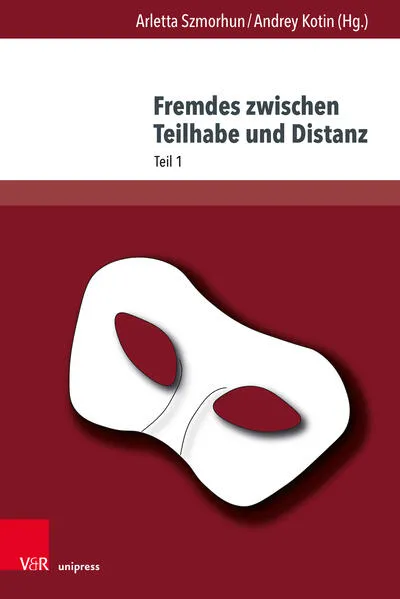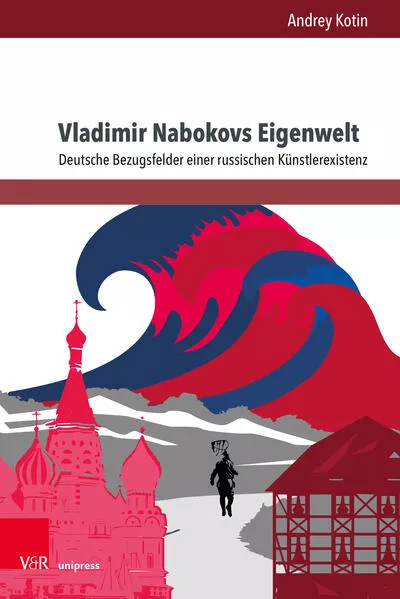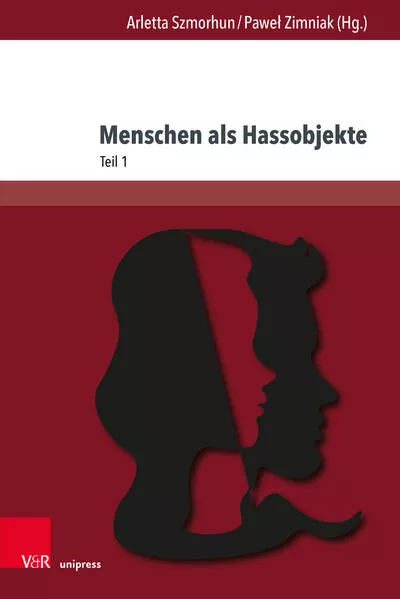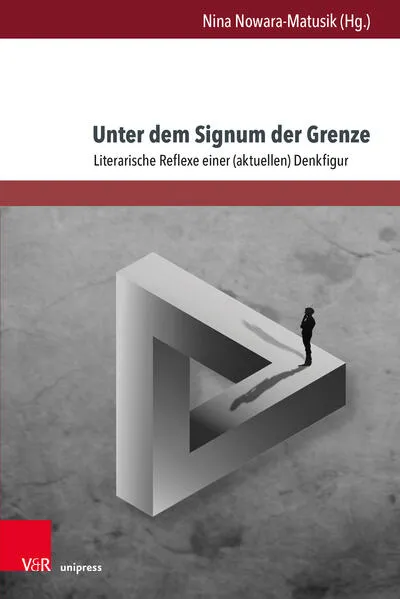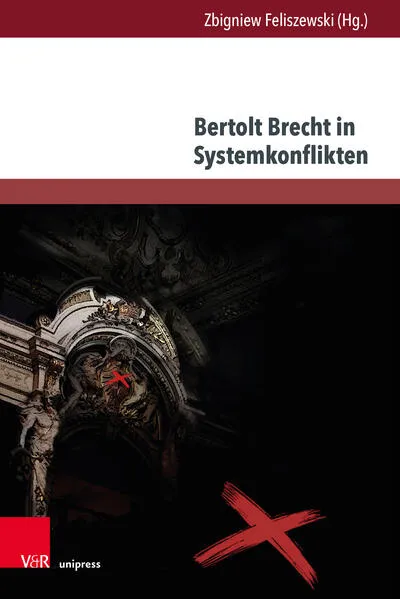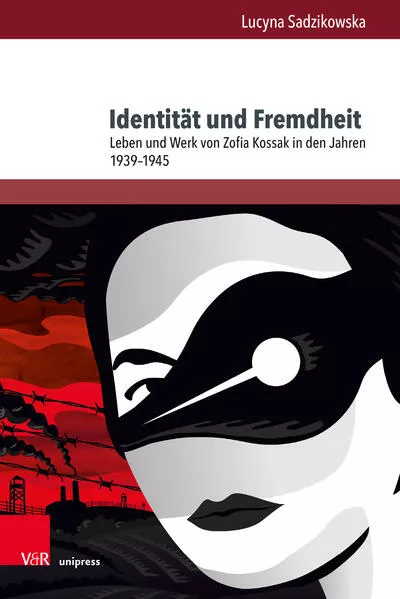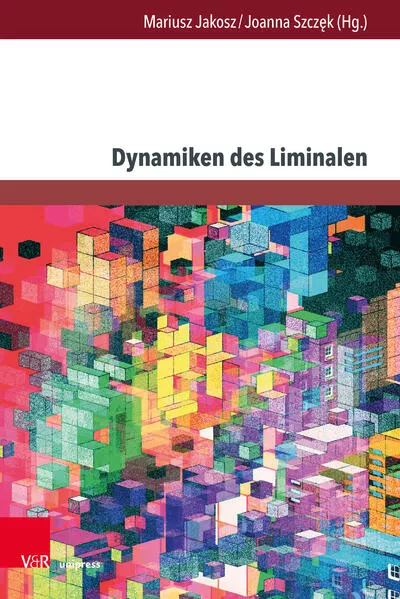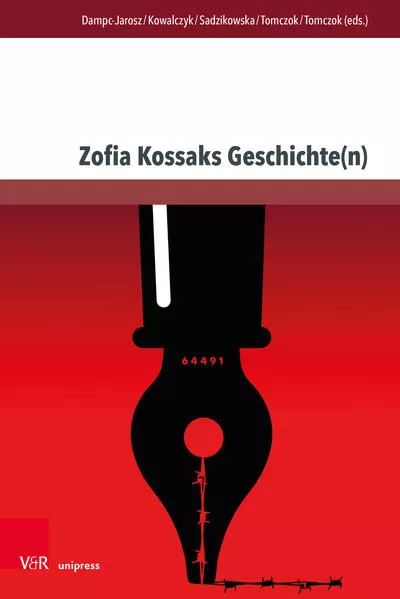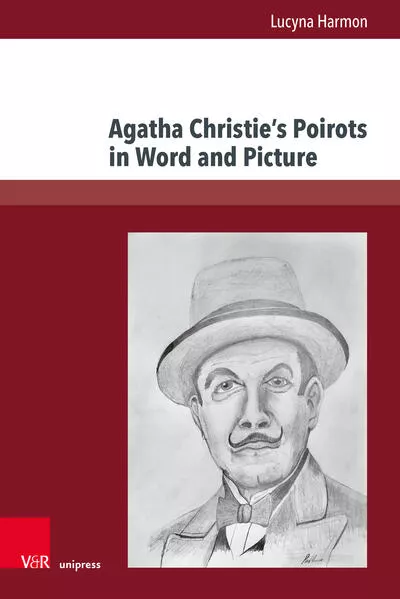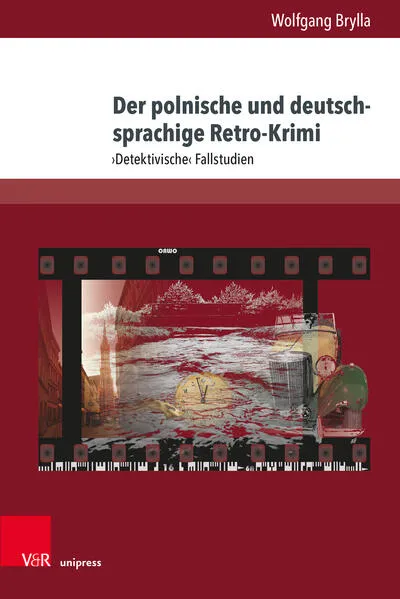Chronologie aller Bände (1 - 11)

Die Reihenfolge beginnt mit dem Buch "Fremdes zwischen Teilhabe und Distanz". Wer alle Bücher der Reihe nach lesen möchte, sollte mit diesem Band von Dr. Agnieszka Dylewska beginnen. Der zweite Teil der Reihe "Vladimir Nabokovs Eigenwelt" ist am 16.05.2022 erschienen. Mit insgesamt 11 Bänden wurde die Reihe über einen Zeitraum von ungefähr 4 Jahren fortgesetzt. Der neueste Band trägt den Titel "Der polnische und deutschsprachige Retro-Krimi".
- Anzahl der Bewertungen für die gesamte Reihe: 1
- Ø Bewertung der Reihe: 1
- Start der Reihe: 12.07.2021
- Neueste Folge: 14.07.2025
Diese Reihenfolge enthält 10 unterschiedliche Autoren.
- Autor: Dylewska, Dr. Agnieszka
- Anzahl Bewertungen: 1
- Ø Bewertung: 1.0
- Medium: Buch
- Veröffentlicht: 12.07.2021
- Genre: Sonstiges
Fremdes zwischen Teilhabe und Distanz
Das Phänomen des Fremden kann – durch Schematismen sozialer Interaktion gesteuert – eine ebenso anziehende wie abstoßende Wirkung erzielen. Oft sind es minimale Situationsverschiebungen bzw. Kontextveränderungen, die die Frage nach sozialer Inklusion oder Exklusion regeln, ohne dabei zeitlich stabil zu sein. Zuschreibungen, Etikettierungen, Stereotypisierungen, Stigmatisierungen und Diskriminierungen, die sich auf religiöse, ethnische, geschlechtliche, weltanschauliche oder ökonomische Kategorien stützen, sorgen dafür, dass Ungleichheiten interaktiv über symbolische Grenzziehungen (re-)produziert und Räume des Eigenen und des Fremden abgesteckt werden. Am Beispiel literatur-, kultur- und sprachwissenschaftlicher Analysen zeigen die Beiträge, dass die Problematisierung des Fremden nicht erst durch große Migrations- und Geflüchtetenströme an Bedeutung gewinnt, sondern auch in seiner sozialen Variante zur Geltung kommt und krisenhafte Begegnungen und/oder leidvolle Auseinandersetzungen mit sich bringt.
The volume investigates in depth the phenomenon of the foreigner, who – controlled by the schemata of social interaction – can achieve both attractive and repulsive effects. These are often minimal situational shifts or context changes that determine the option for one side or the other and regulate the issue of social inclusion/exclusion without being stable over time. Attributions, labelling, stereotyping, stigmatization and discrimination that (can be) based on religious, ethnic, gender, ideological, economic, medical etc. categories ensure that inequalities are (re-)produced in an interactive way via symbolic demarcations and the fields of one’s own and the stranger’s are being sealed. It is shown in this context, using examples of literary, cultural and linguistic analyses, that the problem of the foreigner does not only take on importance in light of the big wave of migration and refugees, but also comes into its own in its social variant and entails (no less) critical encounters and/or painful arguments.
- Autor: Kotin, Andrey
- Anzahl Bewertungen: 0
- Ø Bewertung:
- Medium: Buch
- Veröffentlicht: 16.05.2022
- Genre: Roman
Vladimir Nabokovs Eigenwelt
Although Vladimir Nabokov’s attitude towards Germany alternated between cool distance and ardent disapproval, both in the life and work of the preeminent Russian-American writer various “German tropes” can be observed. This is not merely a matter of several novels which are set in Berlin. Equally interesting are Nabokov’s views regarding the nature of evil and totalitarianism, confronted with the philosophy of Hannah Arendt. Another essential aspect concerns Romantic motifs in “The Defence” and “Lolita”, here viewed under the auspices of specifically German Romanticism (Ludwig Tieck, Friedrich de la Motte Fouqué, E.T.A. Hoffmann). A separate chapter has been dedicated to a comparative analysis of “Invitation to a Beheading” and Franz Kafka’s “The Trial”.
- Autor: Brylla, Wolfgang
- Anzahl Bewertungen: 0
- Ø Bewertung:
- Medium: Buch
- Veröffentlicht: 11.07.2022
- Genre: Roman
Menschen als Hassobjekte
Hate-based ‘grudge matches’ are not only played during periods of wars and revolutions. Even in peacetime, they represent a normal but at the same time a borderline case of human communication, which reveals the affective dynamics of social interaction. If one thinks of the human emotional balance, hatred is considered as a type of devastating ‘mental reality’ that releases destructive energies and creates relational-performative worlds that flout all compassion and human decency. On the one hand, by means of literary, cultural and linguistic analyses, it is shown how the entire existence of an individual or a group and, as a result, their cultures, values, relationships and hometowns are (or can be) damaged and destroyed on intercultural and intracultural basis through obsession with hatred. On the other hand, when dealing with the hate phenomenon, important points of emphasis are placed in order to clarify that the formation of hate collectives faces at the same time the formation of affective groups that turn against this phenomenon.
- Autor: Bauer, Florian
- Anzahl Bewertungen: 0
- Ø Bewertung:
- Medium: Buch
- Veröffentlicht: 05.09.2022
- Genre: Roman
Menschen als Hassobjekte
The area of tension in interpersonal relationships casts, loaded with hatred, its pathological shadows. Human life emerges in its individual and collective, private and public manifestation forms not only around the semantics of freedom, equality and fraternity. The primacy of a peaceful coexistence of diverse ‘homelands’, charity and altruism is frequently turned into its exact opposite during the periods of split societies, since there seems to exist a common human need to always trample on someone.
On the one hand, by means of literary, cultural and linguistic analyses, hate-driven conflict situations based on origin, ethnic group and nationality, culture, ‘system’ and world view, denomination and religious affiliation, gender, sexuality and body aesthetics are investigated. On the other hand, the concepts of provenance, (in)visibility and intensity of hatred experiences as well as the reciprocity question in terms of prevention and defense mechanisms are critically questioned.
- Autor: Blidy, Monika
- Anzahl Bewertungen: 0
- Ø Bewertung:
- Medium: Buch
- Veröffentlicht: 05.09.2022
- Genre: Sonstiges
Unter dem Signum der Grenze
This volume focuses on the highly topical problem of the border, which resonates with the zeitgeist and is investigated principally from a perspective of both literary and cultural studies. On the one hand, literary manifestations and conceptualizations of the border as a wide-ranging figure of thought and category of reflection are targeted here. On the other hand, phenomena, discourses, and narratives are explored that reveal themselves as salient reflections of our age overshadowed by various constraints, limitations, and enclosures. The studies extends from the ancient explorations of the border motif, through Romantic poetics of restriction and dissolution, to the most recent German-language literary production.
- Autor: Lucchesi, Joachim
- Anzahl Bewertungen: 0
- Ø Bewertung:
- Medium: Buch
- Veröffentlicht: 12.12.2022
- Genre: Sonstiges
Bertolt Brecht in Systemkonflikten
Bertolt Brecht is full of contradictions. The cracks, splits, and incompatibilities in his life as well as in his texts call active reading. His consistent denial of logical connections in life, questioning the sustainability of cultures and political systems, and vehement emphasis on the contradiction in people, in social and historical processes, form a point of orientation for a deeper reflection on the meaning of today’s theatrical thinker. Given Brecht’s “difficult reception” in many places, arises the question of his afterlife on different continents, social, political, and cultural systems. This encourages a new, transnational reading of Brecht, which, despite globalization and multi- and transculturalism, seems – in many places – to be caught up in old, national patterns of thought.
- Autor: Sadzikowska, Lucyna
- Anzahl Bewertungen: 0
- Ø Bewertung:
- Medium: Buch
- Veröffentlicht: 12.12.2022
- Genre: Roman
Identität und Fremdheit
This volume is devoted to the work of the Polish writer Zofia Kossak (1889–1968), written during the years of the Second World War. It deals not only with her wartime experiences, but above all raises questions about the nature of faith, especially in dealing with border situations, the inhumanity of war, the alienation of the individual and her loneliness. Seen from this perspective, the work of a writer who was involved in rescuing people during the Second World War takes on particular significance in times of war in Ukraine. The analyses and interpretations presented here are based both on the author’s well-known novels and on secret messages and correspondence written in a Warsaw prison and in Auschwitz, published here for the first time.
- Autor: Wowro, Iwona
- Anzahl Bewertungen: 0
- Ø Bewertung:
- Medium: Buch
- Veröffentlicht: 12.12.2022
- Genre: Roman
Dynamiken des Liminalen
Today, border can be seen as a complex, dynamic and multidimensional phenomenon that is subject to constant change. It also finds its application in the field of (inguistic) science as witnessed by the contributions collected in the present volume, in which the concept of border is addressed from many linguistic angles. Textual, discursive and terminological demarcations are also addressed, as well as communicative aspects of the phenomenon of border. Furthermore, aspects of border(s) are discussed in the context of the refugee discourse, which is becoming more and more topical today, as well as their subject-didactic perspectives in the context of proposals for didacticising literature.
- Autor: Dampc-Jarosz, Renata
- Anzahl Bewertungen: 0
- Ø Bewertung:
- Medium: Buch
- Veröffentlicht: 17.04.2023
- Genre: Roman
Zofia Kossaks Geschichte(n)
The Polish writer Zofia Kossak (1889–1968) wrote historical novels with which she tried to overcome the traumas of the 20th century: two wars, the October Revolution, imprisonment in KL Auschwitz and the loss of her homeland. The contributors deal with individual and collective experiences, with human loneliness in the face of the great story, focusing on the prose works and autobiographical notes of the writer who is considered a traditionalist both in terms of narrative style and idea content. However, the interpretations proposed here, based on contemporary literary theories, break with stereotypical thinking and shed new light on Zofia Kossak’s work by drawing attention to what she perceived in her immediate surroundings, what preoccupied her and what is also part of the problems of the 21st century: totalitarianism, loss of homeland, the significance of the past for the present or concern for the environment in the face of necessary industrial development.
- Autor: Harmon, Lucyna
- Anzahl Bewertungen: 0
- Ø Bewertung:
- Medium: Buch
- Veröffentlicht: 04.09.2023
- Genre: Roman
Agatha Christie’s Poirots in Word and Picture
- Autor: Brylla, Wolfgang
- Anzahl Bewertungen: 0
- Ø Bewertung:
- Medium: Buch
- Veröffentlicht: 14.07.2025
- Genre: Krimi
Der polnische und deutschsprachige Retro-Krimi
Not every historical crime fiction can be labeled as a retro-crime fiction, but every retro-crime fiction is to be considered a variant and subgenre of the historical or historicizing crime fiction, which uses specific narrative techniques to create a portrayal of the past. This portrayal relies both on a particular engagement with cultural media and on genre conventions and traditions. The term ‘retro-crime’, which has been popular in Eastern European literary discourse for several years, is by no means limited, for example, to Polish crime literature. Even in the German-speaking crime fiction scene, there are historical crime novels that tell stories of the modern and postmodern past in retro-stylized or retro-chronicling forms.
